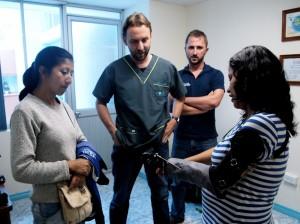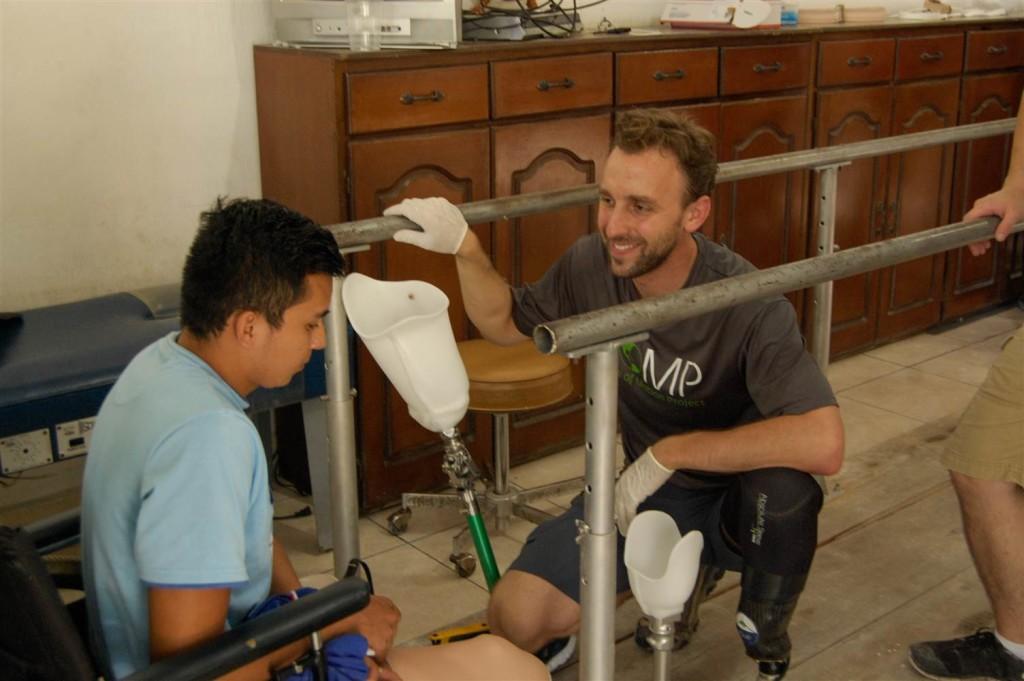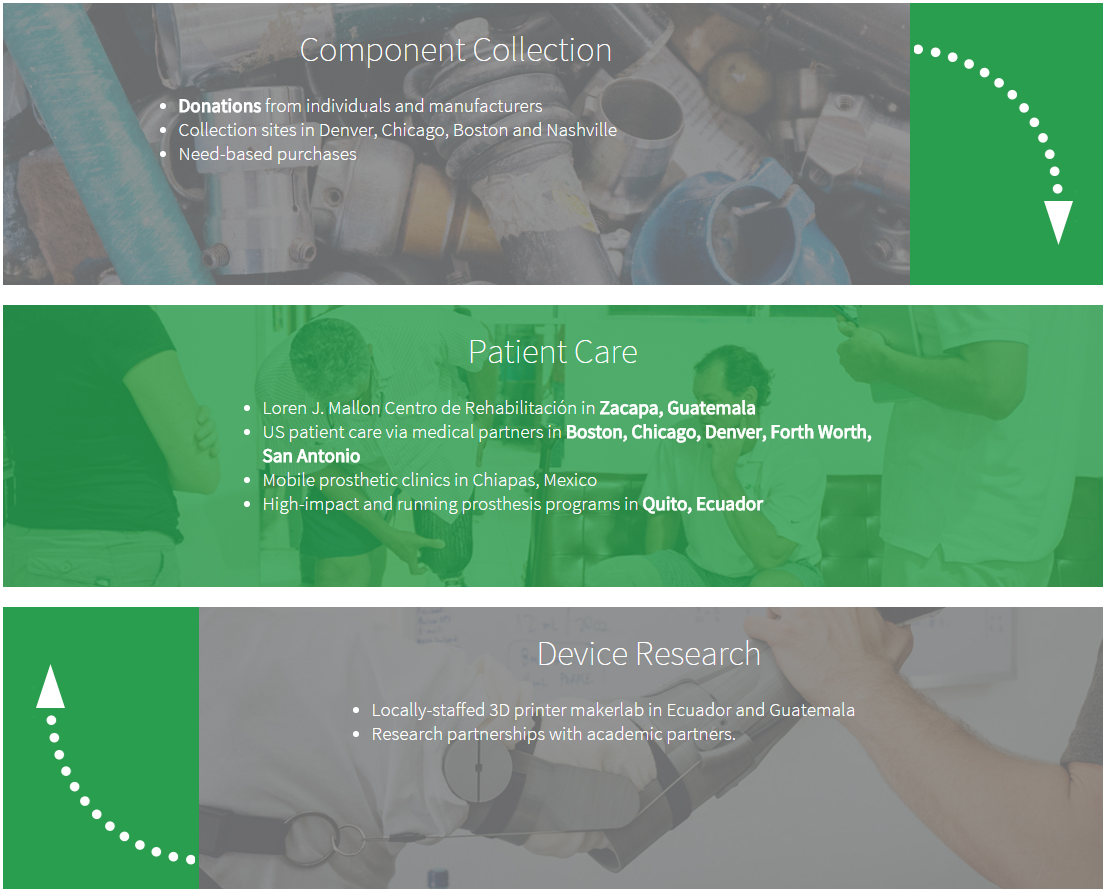Range of Motion Project (ROMP) Establishes Prosthetics Maker Labs with 3D Printers in Ecuador and Guatemela
Many of us who frequently follow 3D printing news would say that perhaps one of its most effective immediate medical applications is the ability to 3D print customized prosthetics and orthotics. And the ways to deliver these devices is becoming as innovative as the technology used to make them. One such example is Range of Motion Project (ROMP) — the brainchild of David Kruda, who is sensitive to the needs of amputees and other medical conditions because he had his left leg amputated as a child due to a congenital birth defect. As part of his prosthetics studies at the University of Illinois, Kruda began traveling to poor countries like Haiti and Ecuador, where he noticed a difference in people’s access to quality medical care. So he teamed up with his colleague, Eric Neufeld, and together they formed an organization that uses maker labs to 3D print prosthetic devices for underserved populations.
Since Kruda lost his leg at the early age of one year old, he is very familiar with the lifelong importance of well-fitted prostheses. Here he summarizes the idea behind ROMP:
“I started looking deeper into what goes on with people who, like me, had some sort of congenital defect, but they happened to be born somewhere else in the world. I found that there’s a good chance those people didn’t ever get access to the care I had growing up and it fascinated me that that could be a reality for so many people… I began to think that we could maybe do a little more than showing up somewhere for a week out of a year to volunteer. What if we really implemented some of our own ideas to see how this system could work for patients in less resource-rich countries?”
While ROMP’s first site was set up in Zacapa, Guatemala over a decade ago, it was in the Quito, Ecuador location that the organization began to experiment with 3D printing to make parts for some of their larger devices. One patient who has benefited tremendously from ROMP’s services is Kathy Pico, who had her leg amputated after suffering from ankle cancer. Since then, she runs marathons using a specially made device, which Pico explains has helped her continue to live life to its fullest:
“You have this idea that you will not be able to have a normal life after an amputation, but I saw David [Krupa] and it was a huge relief because he walked perfectly. I loved sports, watching people jog and walk, but I always had pain in my ankle preventing me from working out and dancing. With my leg, I decided I wanted to live and work, and to run and dance.”
Most impressive is that this very active woman has climbed 8 mountains using the device made by the ROMP team (which stands behind her in the below photo on Mt. Pasochoa, which has a summit of 13,780 ft). Pico also explained that she’s the only female amputee who runs footraces in Ecuador using her device.
While the ROMP team is already romping around several places in need of prosthetic services, they use an innovative care model that acknowledges the links between poverty, vulnerability, and disability. The team’s commitment to providing the best care possible uses “refurbished donated components, new components, and invented components” for its devices. Given the range of components ROMP uses, 3D printing complements the team’s care model, that is backed by medical and academic research partnerships, so the team can do the kind of work they feel is necessary to mitigate unnecessary hardships on a global level. Discuss this article in the 3D Printing Prosthetic forum thread on 3DPB.com.
[Images: ROMP / Source: NBC]Subscribe to Our Email Newsletter
Stay up-to-date on all the latest news from the 3D printing industry and receive information and offers from third party vendors.
You May Also Like
3D Printing Unpeeled: New Arkema Material for HP, Saddle and Macro MEMS
A new Arkema material for MJF is said to reduce costs per part by up to 25% and have an 85% reusability ratio. HP 3D HR PA 12 S has been...
3D Printing News Briefs, January 20, 2024: FDM, LPBF, Underwater 3D Printer, Racing, & More
We’re starting off with a process certification in today’s 3D Printing News Briefs, and then moving on to research about solute trapping, laser powder bed fusion, and then moving on...
3D Printing Webinar and Event Roundup: December 3, 2023
We’ve got plenty of events and webinars coming up for you this week! Quickparts is having a Manufacturing Roadshow, America Makes is holding a Member Town Hall, Stratafest makes two...
Formnext 2023 Day Three: Slam Dunk
I’m high—high on trade show. I’ve met numerous new faces and reconnected with old friends, creating an absolutely wonderful atmosphere. The excitement is palpable over several emerging developments. The high...


































